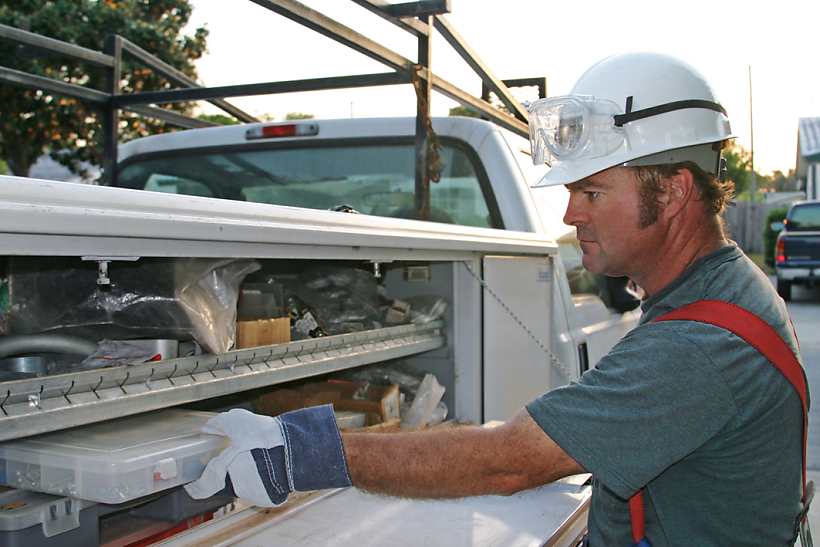A high-quality fleet customer experience is key to turning one-off jobs into long-term relationships and adding value to existing contracts. That’s why professional service companies are investing big in improving this hugely important aspect of their operation.
However, customer standards are higher than ever. Does your business use cars or vans to serve or deliver to customers? Then think of this post as a handy primer on generating business and customer loyalty. It breaks down the most important aspects of customer experience, whether you provide technical services or run a corporate fleet.
Customer journey: Focus on experience at each stage
Customer experience spans multiple touchpoints and interactions, each of which is a chance to build trust in your business. You can win new business and inspire loyalty by paying attention to the entire customer journey. So here, I briefly describe each stage of the experience and offer a list of reflections to help you identify improvements for a better customer experience.
Consideration
The customer has an issue or a demand you can solve. They seek information, reaching out to various companies in your industry in their area. To improve the customer experience at this stage, check with your company these reflections:
- How easy is it to find our business online?
- How easy is our company to contact?
- Is it possible to communicate with us through the customer’s preferred channel?
- How do we monitor incoming requests to ensure we respond as quickly as possible?
Evaluation and decision
The customer receives replies from various companies. They assess the possibilities and decide which company to use for this service. Optimise the customer experience and ask these reflections:
- How quickly do we respond to inquiries on all channels?
- Do we personalise our responses using the customer’s name and other information from their inquiry?
- How quickly can we schedule an appointment, and how fast can we solve this customer’s problem?
- How do we ensure the customer feels valued in this phase and not like a number in our queue?
Service
A member of your team visits the customer’s home or workspace to deliver the product or complete the service as requested. This is also an important moment to optimise the experience of the customer. Reflections:
- Is the ETA we gave our customer usually accurate? How do we ensure we meet it?
- How do we keep in contact with them between the time they make the appointment and the time we arrive at their door?
- How does the customer feel they are treated by our team member throughout the appointment?
- Does the problem usually get solved in one visit? If not, is the customer expecting that?
- If there is some unexpected disruption (ETA not met, appointment cancelled, second visit required) how is this communicated to the customer? Do they get this information in a timely manner? Is the reason for the disruption clear?
Post-service
The job has been completed. But that does not mean that you do not have any influence on the customer experience anymore. Reflections:
- What steps do we take to encourage repeat business?
- Do we keep the customer engaged with our company after the service? How do we do so?
- Do we proactively follow up to find out how positive or negative the customer found our service?
- If the customer contacts us again, will they get the feeling we remembered them and are still valued by the company? How do we ensure that?


4 steps to a better fleet customer experience
Whatever improvements you may have identified above require action. But it’s not just the actions you take that matter—it’s also how you go about them. These four clear steps can keep you on the right track of improving your customer experience.
1. Keep it human
One of the most interesting effects of mass digitisation is that it has put a premium on human interactions. According to Salesforce, 84% of customers say that being treated as a human being rather than a number by a company is important to getting their business. A majority also say that they want the companies they deal with to remember their preferences and previous interactions. Treat the customer this way and their experience of your company will improve.
2. Refine your communication
Customers are used to communicating with friends, family and businesses through a variety of channels. When communicating with a company, customers expect clarity, speed and accuracy, regardless of where the interaction takes place.
Yet in the same Salesforce study cited in point 1 above, 76% of customers say they’ve been given conflicting answers on an issue from different channels at the same company; just 22% say that communications with a company are seamless from one channel to another.
3. Make good team behaviour a priority
Regardless of your field team’s core job, they are a key part of maintaining a positive image of your company in the minds of both your customers and your potential customers. When out in public, your team is representing your company, so good behaviour must be encouraged alongside productivity.
Make sure the entire team is working together for the best possible customer experience.
4. Move quickly
Quick service is not only preferred but expected by today’s customers. If you’re waiting longer than six hours to respond to an email enquiry, there is a high chance your competitor already has your potential customer’s business. The same principle applies to the speed with which you can set up an appointment and deliver the service.


Putting the right tools in place
Once you’ve reflected on your typical customer journey, you can zero in on improving areas of experience. This is where fleet management solutions prove supremely useful.
A fleet management solution like Webfleet gives you access to all your vehicle and driver data. This information provides the insights needed to optimise scheduling, respond faster, communicate clearer and prioritise good team behaviour, all of which are vital to delighting your customers.
Need some ideas for streamlining your working processes and improving your fleet’s customer service? Discover our workflow management solutions now.










